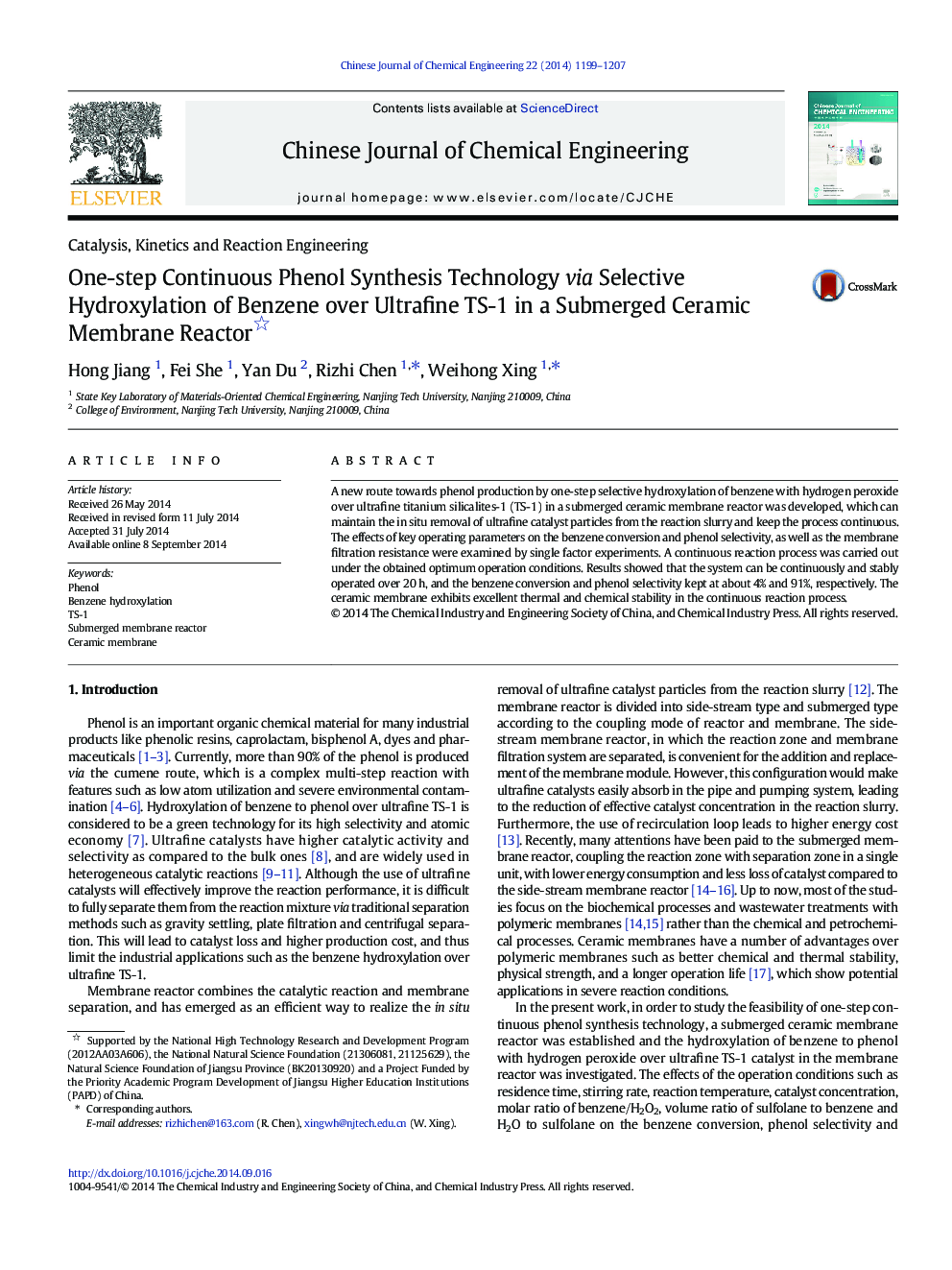| Article ID | Journal | Published Year | Pages | File Type |
|---|---|---|---|---|
| 168221 | Chinese Journal of Chemical Engineering | 2014 | 9 Pages |
A new route towards phenol production by one-step selective hydroxylation of benzene with hydrogen peroxide over ultrafine titanium silicalites-1 (TS-1) in a submerged ceramic membrane reactor was developed, which can maintain the in situ removal of ultrafine catalyst particles from the reaction slurry and keep the process continuous. The effects of key operating parameters on the benzene conversion and phenol selectivity, as well as the membrane filtration resistance were examined by single factor experiments. A continuous reaction process was carried out under the obtained optimum operation conditions. Results showed that the system can be continuously and stably operated over 20 h, and the benzene conversion and phenol selectivity kept at about 4% and 91%, respectively. The ceramic membrane exhibits excellent thermal and chemical stability in the continuous reaction process.
Graphical abstractA one-step continuous synthesis route of phenol by hydroxylation of benzene with hydrogen peroxide over ultrafine TS-1 in a submerged ceramic membrane reactor is developed. The operation conditions have important impacts on the benzene conversion, phenol selectivity and filtration resistance. The optimum operation conditions can be obtained by balancing their effects on the catalytic properties and separation efficiency. The benzene hydroxylation with hydrogen peroxide over TS-1 can be continuously run over 20 h in the submerged ceramic membrane reactor and the ceramic membrane exhibits excellent stability in the reaction system.Figure optionsDownload full-size imageDownload as PowerPoint slide
